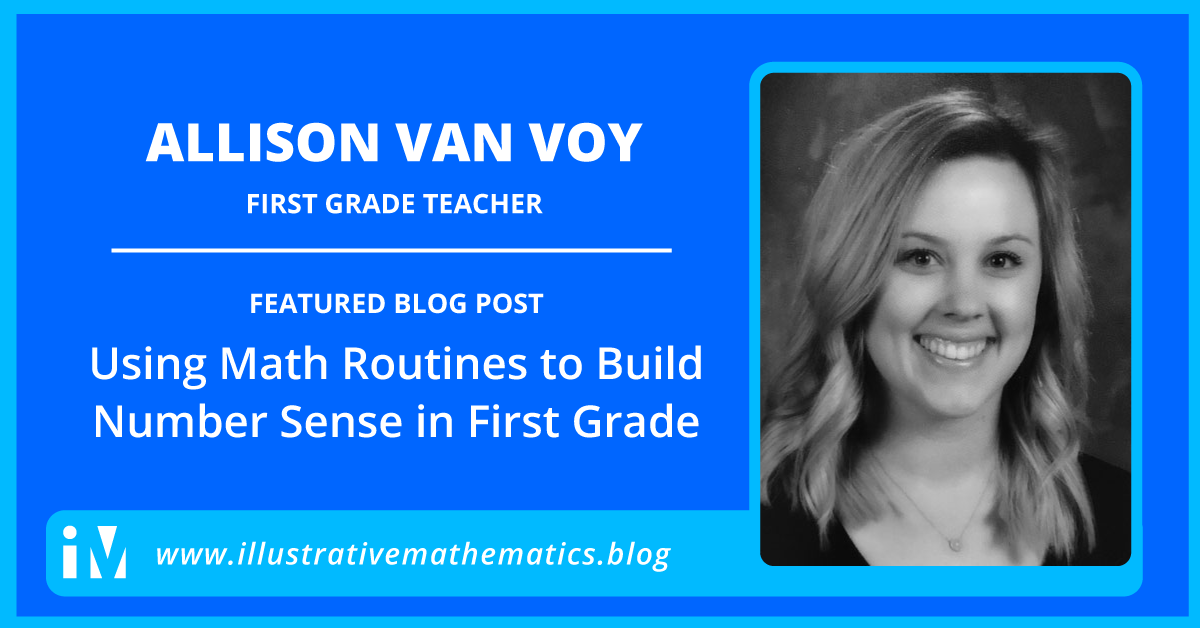By Allison Van Voy
When I started teaching four years ago, I had no idea how important number sense was to a student’s math understanding. I was fresh out of college, brand new to teaching, and number sense was not a concept I had learned in my math courses.
In my preparation to teach 1st grade, I knew students learned various operations with numbers, however, I didn’t know that in order for students to truly grasp what the numbers actually mean, they need experiences that explicitly focus on the numbers themselves and the different ways they can be represented. It wasn’t until I read Number Sense Routines: Building Numerical Literacy Every Day in Grades K-3 ,by Jessica F. Shumway, that I truly understood what number sense was and found ways I could support that understanding in my classroom. Since reading the first chapter of the book, I have incorporated a number routine in my daily schedule, and from the very first one, I have seen my students’ understanding of numbers become one of their greatest strengths. These routines, especially “Ways to Make a Number,” are a critical part of my daily math block that my students look forward to every day.
“Ways to Make a Number” is my students’ favorite routine this year. I slightly modified the activity from the book’s version to make it accessible to all my students. I started the year asking them to represent teen numbers and progressed to representing numbers greater than 20. To engage more students, I present this routine as a game where the objective is to see how many ways they can represent a given number. Each student has their own whiteboard and is given 3–5 minutes to come up with as many ways as possible to represent the number.
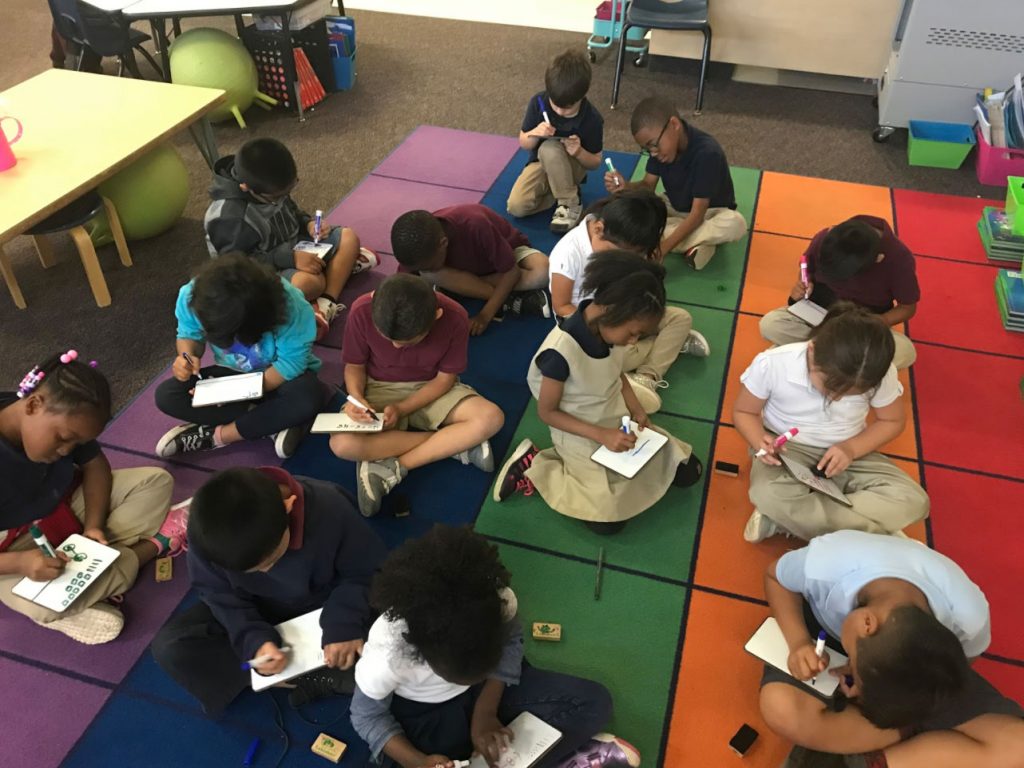
Because my students are first graders without a lot of experience representing numbers in various ways, I began the year with a lot of modeling of how to represent their thinking as they explained it to me. Now, mid-year, my students are completely independent in their work. After the 3–5 minutes to write down a few ideas, we do an open share where they explain how they represented their number and why they chose that particular method. Answers range from pictures and number lines to addition and subtraction equations and number bonds.
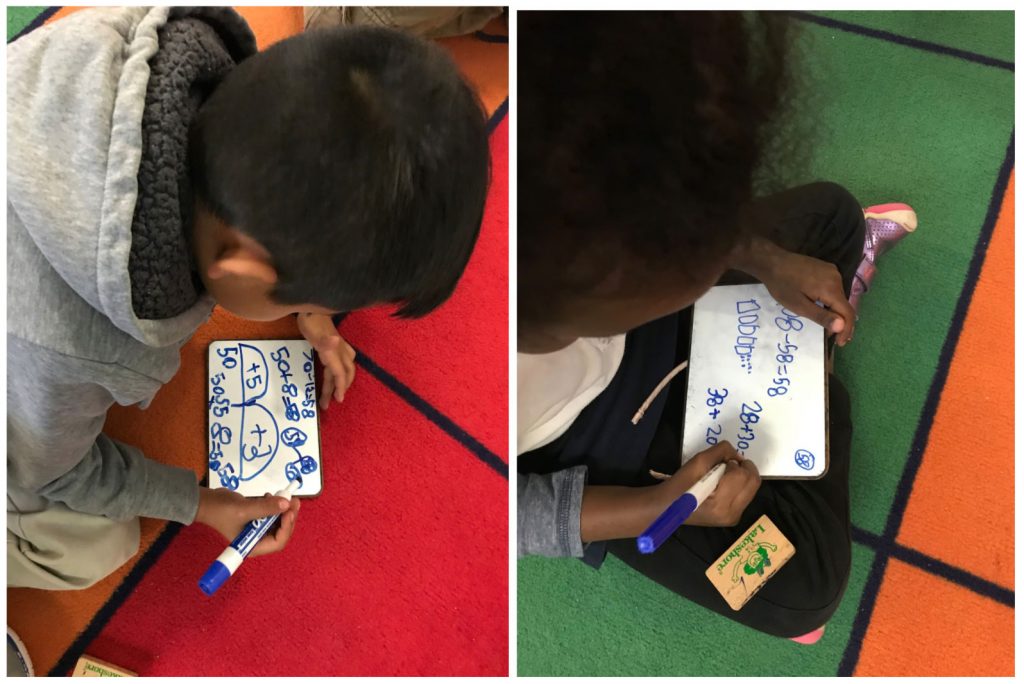

Every time we do this routine, I find students building on one another’s ideas, challenging themselves, and getting excited about the different ways they can represent a number.
Every time we do this routine, I find students building on one another’s ideas, challenging themselves, and getting excited about the different ways they can represent a number. I hear cheers and gasps as other students share their answers. This routine not only builds an understanding of how numbers are composed and decomposed, but it is also an engaging way for students to dive deeper into the meaning of numbers, which sets the foundation for future mathematical experiences. The conversations this routine spurs surprise me time and time again.
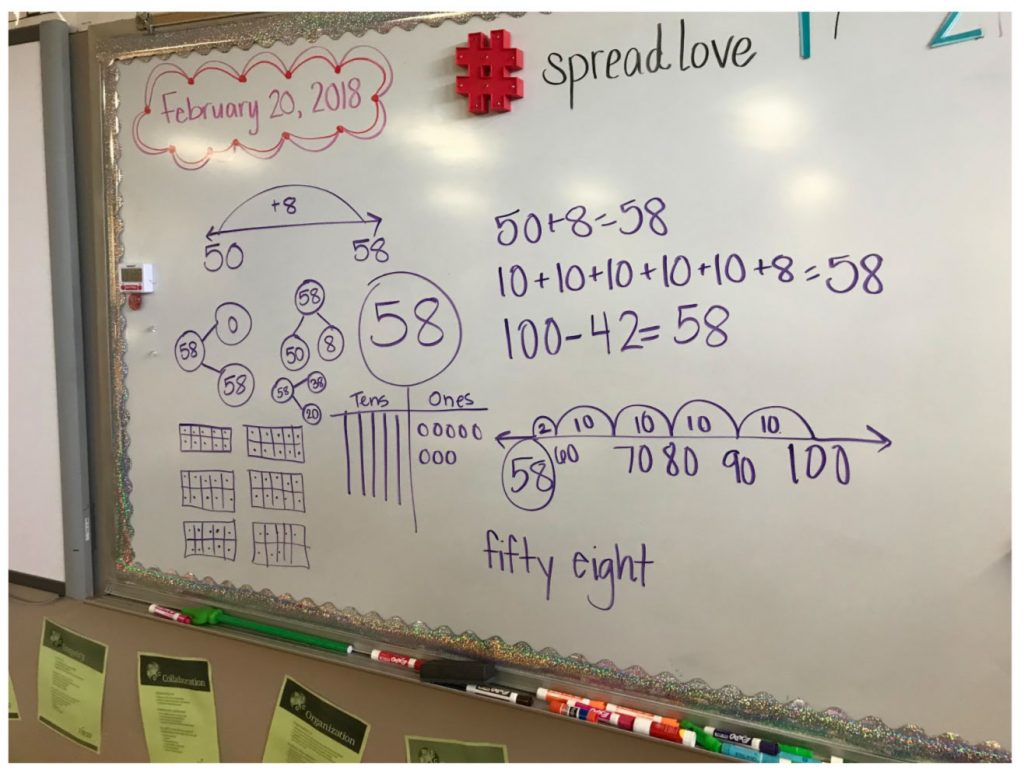
Once we finish the routine and all the students’ ideas are recorded on the board, we do a bit of an extension on making mathematical connections. I ask them to look at all the different ideas and tell me which two representations they think are most alike. My goal with this question is for them to understand the connections between the different representations. After we completed this routine last week, I gave my students a minute to think and could tell they were really engaged and interested in making sure their answers were correct. The first student said he thought the pictorial version of the tens and ones and the ten frames for 58 were most alike. He stopped there, so I asked him to tell me more, and he explained that they both had five groups of ten and eight ones. He made a connection that 58 was made of tens and ones and that there were different ways to show that. Another student told me that the equation 50 + 8 = 58 and the number bond with a whole of 58 and two parts of 50 and 8 were the most similar because they were the same two parts and the same whole, just shown a different way.
I love that the “Ways to Make a Number” routine allows students to build on what they know about a number but also offers, through discussions with one another, the opportunity to clear up any partial misunderstandings.
I love that the “Ways to Make a Number” routine allows students to build on what they know about a number but also offers, through discussions with one another, the opportunity to clear up any partial misunderstandings. For example, during this routine one of my students told me he used ten frames to represent the number 58. He explained that he would need 5 ten frames to represent that number. Immediately, another student raised her hand and told me she thought we needed 6 ten frames. I asked her to further explain her thinking, and she told me that while we do need five ten frames for the groups of ten, we would need an extra ten frame to account for the eight ones. As soon as she explained this, I saw my other student’s face click with understanding. This routine provides a huge opportunity for students to justify their thinking while listening and learning from their peers. Even more impressive, I serve only as a facilitator, as my students are able to create many of their own learning opportunities.
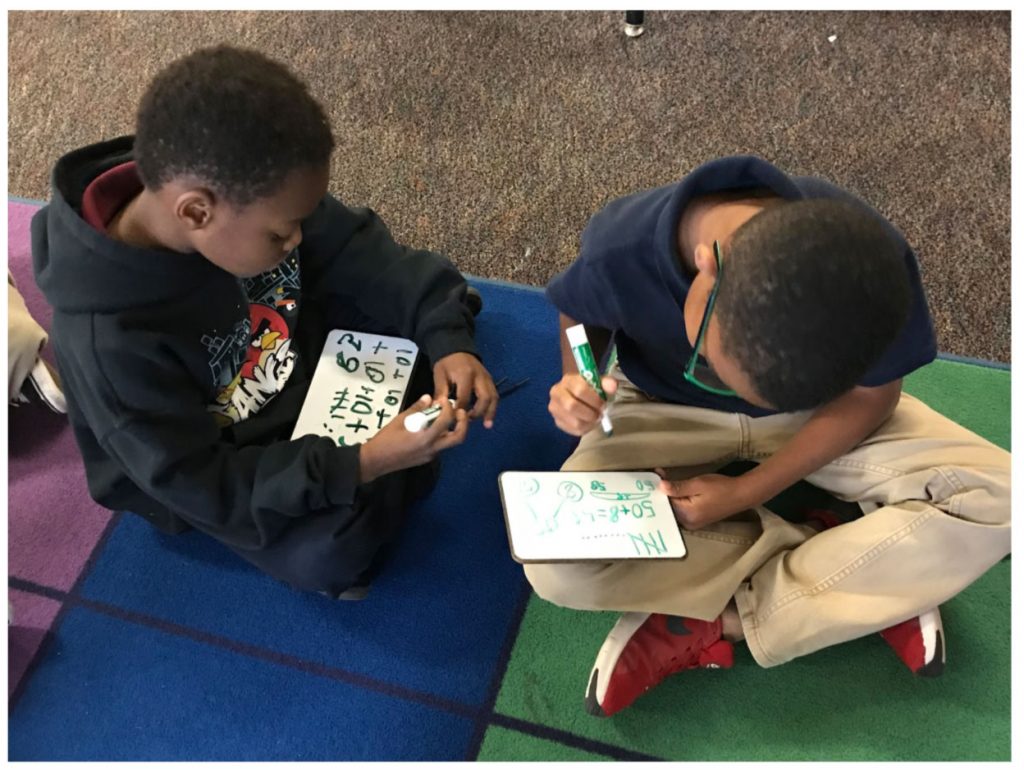
This seemingly simple routine has dramatically improved my students’ understanding of numbers. They get excited to challenge themselves and find new or different ways to demonstrate what they know. When students take ownership of their learning and feel they have valid answers and reasoning, it gives them the confidence to step outside their comfort zone and challenge themselves. And with a firm understanding of the meaning of numbers, or “number sense,” students will be able to successfully build on that understanding when learning future math concepts. This is only one of the many routines that I incorporated into my classroom that has changed the way my students and I look at math.
Next Steps
I would love to hear about routines you use in your classrooms to build a stronger sense of numbers. Please share your ideas in the comments section below so we can all learn more together.
